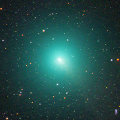
|
It approached to the earth down to 0.12 A.U. and brightened up to 4.6 mag in October (Oct. 18, Juan Jose Gonzalez). It was very large, double of the full moon, and very bright, visible with naked eyes. Now it is fading, but still bright as 8.4 mag (Dec. 18, Katsumi Yoshimoto). After this, it keeps observable for a long time until 2011 June when it fades down to 17 mag.
Date(TT) R.A. (2000) Decl. Delta r Elong. m1 Best Time(A, h)
Jan. 1 7 18.15 -16 56.3 0.466 1.370 139 8.8 0:39 ( 0, 38)
Jan. 8 7 12.70 -15 28.3 0.517 1.427 142 9.3 0:06 ( 0, 39)
|
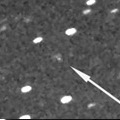
|
The condition in this apparition is bad. It keeps unobservable for a while. In the Southern Hemisphere, it will appear in the morning sky at 12.5 mag in February, then it keeps observable while fading gradually. In the Northern Hemisphere, it is not observable until when it fades down to 15 mag.
Date(TT) R.A. (2000) Decl. Delta r Elong. m1 Best Time(A, h)
Jan. 1 16 59.35 -21 42.4 2.358 1.515 24 12.4 5:37 (299, 3)
Jan. 8 17 22.91 -22 41.9 2.335 1.511 25 12.3 5:38 (300, 3)
|
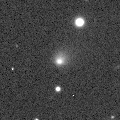
|
Already very bright as 11.5 mag (Nov. 24, Juan Jose Gonzalez). It is expected to keep so bright as 6-8 mag for a long time from 2011 to 2012, and to be observable in good condition in the Northern Hemisphere. It will be unobservable soon. It will appear in the morning sky in late March in the Southern Hemisphere, or in late April in the Northern Hemisphere.
Date(TT) R.A. (2000) Decl. Delta r Elong. m1 Best Time(A, h)
Jan. 1 21 58.90 -27 41.2 5.147 4.493 44 13.2 18:29 ( 43, 13)
Jan. 8 22 1.18 -26 41.7 5.161 4.427 37 13.2 18:34 ( 48, 9)
|

|
Now it is 13.8 mag (Dec. 18, D. Chestnov and A. Novichonok).
Date(TT) R.A. (2000) Decl. Delta r Elong. m1 Best Time(A, h)
Jan. 1 11 17.48 -0 48.3 5.847 6.244 109 13.8 4:37 ( 0, 54)
Jan. 8 11 17.17 -0 56.6 5.743 6.244 116 13.8 4:09 ( 0, 54)
|

|
Big asteroid discovered in 1906. It suddenly showed the cometary activity on Dec. 11. Now it is 13.4 mag (Dec. 11, S. Larson), brighter than quiescent phase by 1 mag. The coma extends up to 5 arcmin. It is very bright as 11.5 mag visually (Dec. 17, Juan Jose Gonzalez).
Date(TT) R.A. (2000) Decl. Delta r Elong. m1 Best Time(A, h)
Jan. 1 9 58.91 30 22.1 2.293 3.078 136 13.9 3:19 ( 0, 85)
Jan. 8 9 56.67 31 18.1 2.225 3.068 142 13.8 2:49 ( 0, 86)
|
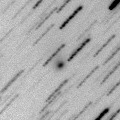
|
Now it is 12.9 mag, much brighter than originally expected and visible visually (Dec. 4, Seiichi Yoshida). In the Northern Hemisphere, it will be observable at 13-14 ag in good condition from autumn to winter. In the Southern Hemisphere, it will be unobservable until 2011 spring.
Date(TT) R.A. (2000) Decl. Delta r Elong. m1 Best Time(A, h)
Jan. 1 20 58.45 37 56.0 2.724 2.538 68 13.9 18:29 (113, 40)
Jan. 8 21 12.94 35 14.8 2.801 2.531 64 14.0 18:34 (111, 36)
|
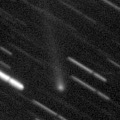
|
Now it is 13.8 mag and visible visually (Nov. 13, Juan Jose Gonzalez). It keeps observable at 14-15 mag in good condition from autumn to next spring.
Date(TT) R.A. (2000) Decl. Delta r Elong. m1 Best Time(A, h)
Jan. 1 5 54.81 -6 56.5 2.087 2.965 147 14.3 23:10 ( 0, 48)
Jan. 8 5 39.29 -9 6.1 2.128 2.957 140 14.4 22:27 ( 0, 46)
|
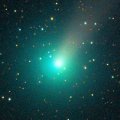
|
It brightened up to 7.9 mag in April and May (May 5, Juan Jose Gonzalez). Now it is fading. The central part is so faint as 16-17 mag. However, extremely faint large coma extends, and the total brightness is still bright as 14.3 mag (Dec. 27, D. Chestnov and A. Novichonok). It keeps observable for a long time until when it fades out in the Northern Hemisphere. It is not observable in the Southern Hemisphere.
Date(TT) R.A. (2000) Decl. Delta r Elong. m1 Best Time(A, h)
Jan. 1 4 38.39 40 13.7 2.578 3.455 148 14.5 21:54 (180, 85)
Jan. 8 4 27.94 38 8.9 2.705 3.525 141 14.7 21:17 (180, 87)
|
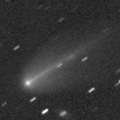
|
Bright new comet discovered visually by Kaoru Ikeya and Shigeki Murakami. Now it is 13.7 mag (Dec. 18, D. Chestnov and A. Novichonok). Its envelope similar to 17P/Holmes is getting diffuse rapidly. In the Northern Hemisphere, it keeps observable for a long time after this in the morning low sky. It locates very low in the Southern Hemisphere, but it will be getting higher gradually.
Date(TT) R.A. (2000) Decl. Delta r Elong. m1 Best Time(A, h)
Jan. 1 14 57.89 -19 15.4 2.159 1.744 52 14.5 5:37 (318, 24)
Jan. 8 15 13.93 -20 51.2 2.132 1.772 55 15.1 5:38 (322, 24)
|
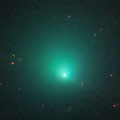
|
It has kept bright as 8.5 mag since July until September. Now it is fading, but it is still bright as 13.2 mag (Dec. 27, D. Chestnov and A. Novichonok). It may be visible visually in January.
Date(TT) R.A. (2000) Decl. Delta r Elong. m1 Best Time(A, h)
Jan. 1 1 34.14 -5 4.3 1.849 2.233 99 14.8 18:52 ( 0, 50)
Jan. 8 1 41.26 -3 30.9 1.972 2.277 94 15.1 18:34 ( 1, 52)
|
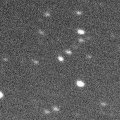
|
Now it is 14.7 mag (Dec. 27, D. Chestnov and A. Novichonok). It keeps bright as 14-15 mag for a long time after this until 2013. It is not observable in the Northern Hemisphere, but it is observable in good condition in the Southern Hemisphere.
Date(TT) R.A. (2000) Decl. Delta r Elong. m1 Best Time(A, h)
Jan. 1 15 52.37 -58 48.4 6.702 6.071 46 15.0 5:37 (335,-14)
Jan. 8 15 58.80 -59 55.8 6.624 6.049 50 14.9 5:38 (337,-13)
|
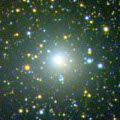
|
It reached up to 7.7 mag in 2009 summer (2009 Aug. 13, Chris Wyatt). It is fading now. It will never be observable again in the Northern Hemisphere. It becomes low also in the Southern Hemisphere. Therefore, no observations have been reported since October. But it will be getting higher after January. In the Southern Hemisphere, it keeps observable in good condition until 2011 autumn when it becomes fainter than 18 mag.
Date(TT) R.A. (2000) Decl. Delta r Elong. m1 Best Time(A, h)
Jan. 1 17 56.77 -49 36.4 6.671 5.823 28 15.0 5:37 (316,-23)
Jan. 8 18 1.11 -50 4.2 6.689 5.871 31 15.1 5:38 (318,-20)
|
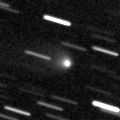
|
It is already bright as 14.5 mag and visible visually (Sept. 30, Alan Hale). Now it is unobservable. But it will appear in the morning sky in late February in the Northern Hemisphere, or in late March in the Southern Hemisphere. It will be observable at 13-14 mag for a long time from 2011 to 2012.
Date(TT) R.A. (2000) Decl. Delta r Elong. m1 Best Time(A, h)
Jan. 1 20 13.48 -7 21.3 7.088 6.225 26 15.2 18:29 ( 75, 8)
Jan. 8 20 15.18 -7 20.9 7.105 6.197 20 15.2 18:34 ( 80, 2)
|
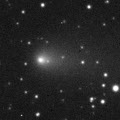
|
It brightened up to 11.5 mag in July (July 18, Juan Jose Gonzalez). Now it is 15.2 mag (Dec. 28, D. Chestnov and A. Novichonok). Fading slowly. It is observable in excellent condition in the Southern Hemisphere. It will be getting lower in the evening sky gradually, and will be unobservable in January.
Date(TT) R.A. (2000) Decl. Delta r Elong. m1 Best Time(A, h)
Jan. 1 22 15.24 -20 11.5 3.568 3.015 48 15.3 18:29 ( 44, 21)
Jan. 8 22 24.95 -19 6.4 3.659 3.036 44 15.4 18:34 ( 49, 18)
|
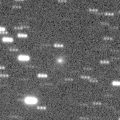
|
Now it is 15.3 mag (Dec. 27, D. Chestnov and A. Novichonok), much brighter than originally expected. It keeps 16 mag until 2011 spring. It keeps observable in good condition in the Southern Hemisphere. But in the Northern Hemisphere, it locates very low in 2011 spring only.
Date(TT) R.A. (2000) Decl. Delta r Elong. m1 Best Time(A, h)
Jan. 1 9 0.90 -69 56.8 2.832 2.896 83 15.5 2:22 ( 0,-15)
Jan. 8 8 21.65 -69 21.5 2.782 2.911 87 15.5 1:15 ( 0,-14)
|
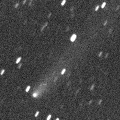
|
Now it is 15.1 mag (Dec. 18, D. Chestnov and A. Novichonok). It has a long tail by CCD observations. It keeps observable after this while fading gradually.
Date(TT) R.A. (2000) Decl. Delta r Elong. m1 Best Time(A, h)
Jan. 1 13 2.84 -23 6.3 2.321 2.309 77 15.5 5:37 (348, 31)
Jan. 8 13 9.13 -24 11.9 2.280 2.357 82 15.6 5:38 (354, 31)
|

|
A small outburst occured and it brightened by 2 mag, up to 16.1 mag, on 2010 Aug. 31 (Bernhard Haeusler). Now it is 15.2 mag (Dec. 22, Ken-ichi Kadota). It will brighten up to 11.5 mag in 2011 autumn. In the Northern Hemisphere, it keeps observable for a long time until 2012 spring. In the Southern Hemisphere, it is not observable until 2011 November.
Date(TT) R.A. (2000) Decl. Delta r Elong. m1 Best Time(A, h)
Jan. 1 16 41.26 23 41.8 3.868 3.407 55 15.8 5:37 (262, 32)
Jan. 8 16 48.85 25 7.1 3.745 3.349 59 15.6 5:38 (263, 37)
|
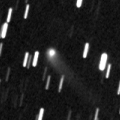
|
Now it is 15.2 mag (Nov. 27, A. Novichonok and D. Chestnov). It will be fading very slowly after this. In the Northern Hemisphere, it keeps observable for a long time until 2012 spring when it fades down to 17-18 mag. It will not be observable in the Southern Hemisphere.
Date(TT) R.A. (2000) Decl. Delta r Elong. m1 Best Time(A, h)
Jan. 1 19 38.51 32 1.6 5.041 4.574 56 15.6 18:29 (114, 23)
Jan. 8 19 48.91 32 14.4 5.074 4.584 55 15.6 18:34 (117, 19)
|
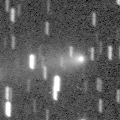
|
It reached up to 14.0 mag and became visible visually in December (Dec. 17, Juan Jose Gonzalez). It keeps locating high in the Northern Hemisphere after this. But it will be fading. It will be fainter than 18 mag in April. It locates low in the Southern Hemisphere.
Date(TT) R.A. (2000) Decl. Delta r Elong. m1 Best Time(A, h)
Jan. 1 6 31.24 40 18.2 1.277 2.235 162 15.8 23:47 (180, 85)
Jan. 8 6 23.85 41 37.3 1.310 2.252 157 16.0 23:12 (180, 83)
|

|
Now it is 16.0 mag (Dec. 25, Ken-ichi Kadota). It is observable in good condition in the Northern Hemisphere. It must have been bright as 16 mag since September, but it was not discovered. It will be fading after this, and will be fainter than 18 mag in February. It locates low in the Southern Hemisphere.
Date(TT) R.A. (2000) Decl. Delta r Elong. m1 Best Time(A, h)
Jan. 1 5 2.65 44 41.2 1.014 1.930 150 16.4 22:20 (180, 80)
Jan. 8 5 2.83 44 2.6 1.070 1.961 145 16.6 21:52 (180, 81)
|
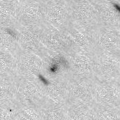
|
Now it is 17.0 mag (Dec. 28, D. Chestnov & A. Novichonok). It will be fading slowly after this. It is not observable at all in the Northern Hemisphere. In the Southern Hemisphere, it will be getting lower gradually after this.
Date(TT) R.A. (2000) Decl. Delta r Elong. m1 Best Time(A, h)
Jan. 1 0 18.42 -61 7.5 3.111 2.872 66 16.5 18:29 ( 6, -6)
Jan. 8 0 15.24 -57 35.7 3.198 2.895 63 16.6 18:34 ( 12, -4)
|
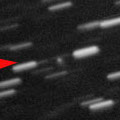
|
Now it is 16.5 mag (Dec. 23, G. Muler, R. Naves). In the Northern Hemisphere, it keeps observable in good condition until 2011 spring when it brightens up to 16 mag. In the Southern Hemisphere, it keeps locating low.
Date(TT) R.A. (2000) Decl. Delta r Elong. m1 Best Time(A, h)
Jan. 1 4 59.62 38 27.1 1.633 2.548 153 16.8 22:16 (180, 87)
Jan. 8 4 53.36 38 36.2 1.647 2.521 145 16.7 21:42 (180, 86)
|

|
It was observed only during 3 days in 2009 May, then it has been lost. The ephemeris says that it passes the perihelion in 2011 January and it will be observable at 17 mag. But actually, it will not be found.
Date(TT) R.A. (2000) Decl. Delta r Elong. m1 Best Time(A, h)
Jan. 1 7 33.06 -18 54.1 3.131 3.902 136 16.9 0:54 ( 0, 36)
Jan. 8 7 17.03 -18 55.1 3.108 3.902 138 16.9 0:11 ( 0, 36)
|

|
Asteroid discovered in 2002 was revealed to be a comet. Now it is 16.6 mag (Dec. 26, Ken-ichi Kadota). It will be fading after this, and will be fainter than 18 mag in February. It is observable in good condition in the Northern Hemisphere. It is not observable in the Southern Hemisphere.
Date(TT) R.A. (2000) Decl. Delta r Elong. m1 Best Time(A, h)
Jan. 1 6 28.96 50 38.8 0.542 1.485 152 16.9 23:46 (180, 74)
Jan. 8 6 31.15 52 22.5 0.554 1.485 148 16.9 23:21 (180, 73)
|
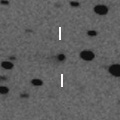
|
Now it is 17.5 mag (Nov. 27, Ken-ichi Kadota). It keeps 17 mag for a long time from 2009 to 2012. It is observable in good condition in the Northern Hemisphere. It locates somewhat low in the Southern Hemisphere.
Date(TT) R.A. (2000) Decl. Delta r Elong. m1 Best Time(A, h)
Jan. 1 0 55.26 15 31.7 7.869 8.075 98 17.1 18:29 ( 12, 70)
Jan. 8 0 53.42 15 18.3 7.992 8.070 91 17.1 18:34 ( 33, 67)
|
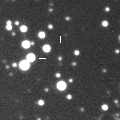
|
Now it is 16.9 mag (Nov. 28, A. Novichonok and D. Chestnov). It is expected to be 15 mag and will be observable in good condition in 2013. It is observable in good condition in the Northern Hemisphere, but not observable in the Southern Hemisphere now.
Date(TT) R.A. (2000) Decl. Delta r Elong. m1 Best Time(A, h)
Jan. 1 1 43.77 58 22.7 7.881 8.378 117 17.2 19:01 (180, 67)
Jan. 8 1 39.41 57 43.6 7.927 8.346 112 17.2 18:34 (178, 67)
|
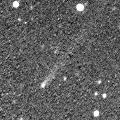
|
Now it is 17.4 mag (Dec. 9, Tzec Maun observatory). It tends to be brightest after the perihelion passage. At the discovery in 1999, it became brightest one year after the perihelion passage. At this time, it became brightest three months after the perihelion passage, then it is fading. It keeps observable in good condition at 18 mag until may.
Date(TT) R.A. (2000) Decl. Delta r Elong. m1 Best Time(A, h)
Jan. 1 10 35.73 6 41.3 2.990 3.609 122 17.3 3:55 ( 0, 62)
Jan. 8 10 34.94 6 38.7 2.922 3.625 129 17.3 3:27 ( 0, 62)
|

|
Large Centaur-type asteroid. It keeps observable at 17-18 mag for a long time until 2013.
Date(TT) R.A. (2000) Decl. Delta r Elong. m1 Best Time(A, h)
Jan. 1 8 0.65 -17 34.7 5.757 6.492 135 17.3 1:21 ( 0, 37)
Jan. 8 7 55.53 -17 0.9 5.712 6.491 139 17.3 0:48 ( 0, 38)
|
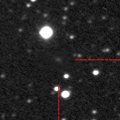
|
Now it is 18.1 mag (Dec. 13, Tzec Maun Observatory). It was observed at 18 mag in winter between 2009 and 2010. It will be observable again at 18 mag in good condition from winter to spring in 2011.
Date(TT) R.A. (2000) Decl. Delta r Elong. m1 Best Time(A, h)
Jan. 1 11 0.27 9 38.9 2.879 3.445 117 17.5 4:20 ( 0, 65)
Jan. 8 11 0.90 9 47.3 2.795 3.449 124 17.5 3:53 ( 0, 65)
|

|
It had been bright as 13-14 mag for a long time from 2007 to 2009. Now it is fading, but it is 15.3 mag still now (Dec. 10, D. Chestnov and A. Novichonok), much brighter than predicted. It keeps observable at 16-17 mag in good condition until next spring.
Date(TT) R.A. (2000) Decl. Delta r Elong. m1 Best Time(A, h)
Jan. 1 11 55.47 37 44.1 8.870 9.299 113 17.6 5:15 (180, 87)
Jan. 8 11 52.98 38 17.7 8.815 9.334 119 17.6 4:45 (180, 87)
|
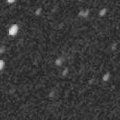
|
Now it is 17.3 mag (Dec. 14, Catalina Sky Survey). It has already passed the perihelion, however, it tends to be brightest after the perihelion passage. In the Northern Hemisphere, it will be observable at 17.5 mag in good condition until the end of 2010. It locates extremely low in the Southern Hemisphere.
Date(TT) R.A. (2000) Decl. Delta r Elong. m1 Best Time(A, h)
Jan. 1 9 13.51 18 33.4 1.600 2.470 144 17.9 2:34 ( 0, 74)
Jan. 8 9 7.15 17 55.5 1.591 2.508 153 18.1 2:00 ( 0, 73)
|
|
![]()
 C/2010 A4 ( Siding Spring )
C/2010 A4 ( Siding Spring ) 123P/West-Hartley
123P/West-Hartley C/2009 K3 ( Beshore )
C/2009 K3 ( Beshore ) 247P/2010 V3 ( LINEAR )
247P/2010 V3 ( LINEAR ) C/2008 S3 ( Boattini )
C/2008 S3 ( Boattini ) C/2010 S1 ( LINEAR )
C/2010 S1 ( LINEAR ) 203P/2008 R4 ( Korlevic )
203P/2008 R4 ( Korlevic ) 2008 YB3
2008 YB3 31P/Schwassmann-Wachmann 2
31P/Schwassmann-Wachmann 2 C/2005 L3 ( McNaught )
C/2005 L3 ( McNaught ) 241P/2010 P2 ( LINEAR )
241P/2010 P2 ( LINEAR )![]()


























